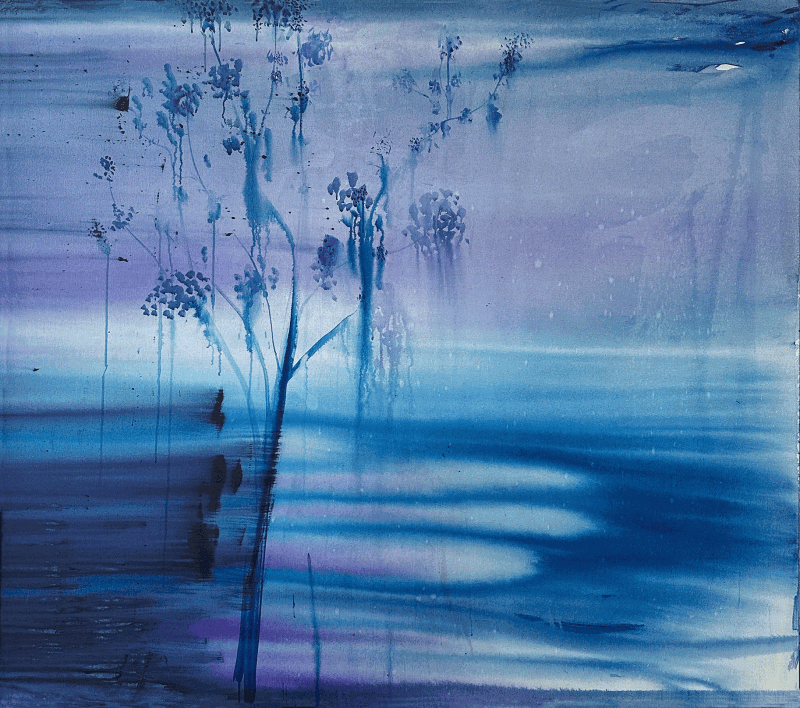Would representing the light be about catching the intangible through the retranscription of its impression – the very phenomenon that influenced Claude Monet to entitle his work Impression, soleil levant (1872-1873), unintentionally foreshadowing the eponymous movement's name of Impressionism? These painters went out of their studio willing to capture the multiple facets of the landscapes, whose faces mutate with the rhythm of the sun.
Painter Omar Mahfoudi experiences the light from the window of his studio. He embraces the image of the day as it passes, giving way to night, the time of dreams. As he remembers the sensation left behind, colour escapes from his brushes, embracing the chromatic palette that transforms the sky. His solo exhibition Waiting for the Light to Change unveils as a stroll from dusk to dawn, a nocturnal expedition in search of clarity.
On the walls, one landscape follows another. The ideal playground for moving light, they exhibit Mahfoudi’s chromatic experimentations. In his eternal quest for pigment, the colourist ventures into the mysteries of the night. How can colour exist in the dark? Mahfoudi associates the exploration of light with the study of its absence.
The light is revealed, sometimes pure in a monochromatic abstraction, and sometimes shy to dress up the night. The scenes wear amethyst and topaz hues, bathing the daytime panoramas in the unknown. The figures that emerge become shadows. The artist addresses obscurity and the sources of light crossing the gloom. If the sun belongs to the day, the night is not devoid of a heavenly body either. In a cyclical movement, the moon changes into the sun. The repetition of forms allows the imagination to awaken, leading Mahfoudi's painting towards abstraction. The figures vanish. The matter mixed with water erases the lines until the horizon is blurred. The ocean and the sky merge, ending up reflecting each other.
Painting the environment is an essential part of Mahfoudi's pictorial vocabulary, presenting itself as an escape. The artist recognises his approach in the words of British painter David Hockney who, interviewed in 2019 by the Van Gogh Museum during his exhibition at the same Amsterdam-based institution, said: ‘It's not the landscape that's boring, it’s the depictions of it that had become boring and I thought that you can't be bored of nature.’ Forests and oceans appear on the canvas as the pretexts to embody the existential and technical questions of their creator, taking life in reality as a form of expression of his inner life.
Unfolding as a manifesto for colour, Waiting for the Light to Change materialises a lack of closeness to nature and light, a nostalgic need to return to the essential - a metaphor for the gradual erasure of narrative in favour of pure painting that speaks for itself. Naturally, night guides Mahfoudi in his pursuit of abstraction, bringing him closer to the idea of the dream whose memory marks his work. Wouldn't waiting for the light to change finally mean touching the abstract?

